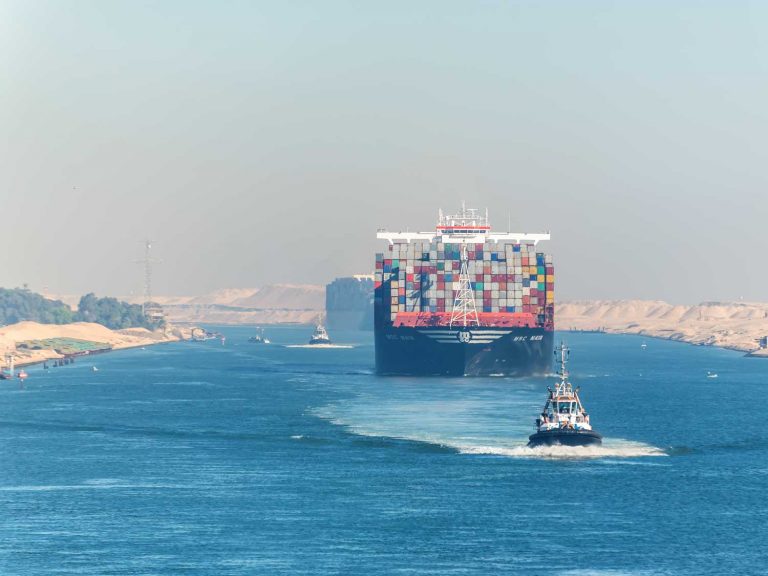
Date:
Suez and Panama Canal crisis could go either way
The danger to container shipping approaching the Suez Canal comes at a time when the other key maritime gateway, the Panama Canal has been restricting transit numbers and draught limits due to drought driven low water levels.
Due to the impact of the prolonged Panama Canal drought carriers have had to carry less containers from Asia, to pass through the shallow Panama Canal and accept ‘vessel bunching’ as the reduction in transit crossings creates a queue of ships at either end of the channel.
The issue has been exacerbated by attacks on container ships in the Red Sea, linked to the conflict in the region, with shipping lines suspending sailings through the Red Sea and via the Suez Canal, diverting vessels around the southern tip of Africa, until the security situation improves.
Shipping via the Cape of Good Hope will add around 3.5k nautical miles, adding approximately two weeks to transit times, with increased fuel consumption potentially leading to significant increases to freight and bunker levels.
It is likely that carriers will implement emergency surcharges to cover fuel and insurance costs in addition to the loss of revenue from the extended round trip voyage duration.
The extended transit time will soak up available capacity which, when combined with the current blanking programme, could lead to a reduction of up to 20% of global capacity, also leading to growing equipment imbalances.
There are two positives, however…
After better-than-expected November rains, the Panama Canal Authority have announced that they will be increasing the number of ships it accepts each day starting in January, with 24 vessels permitted to pass through, up from 22 currently.
The launch of Operation Prosperity Guardian by the US Navy is forming a coalition that includes the UK, Bahrain, Canada, France, Italy, Netherlands, Norway, Seychelles and Spain, to jointly address the security challenges in the Red Sea and Gulf of Aden.
Suppressing the current threat to maritime trade and creating a system to ensure safe passage of container ships will take time and the shipping lines will need to be certain that all risks have been removed before they will return to the Suez Canal.
If it’s just a month or two, then the Cape of Good Hope diversions may have only a short-term impact on rates, capacity, and equipment availability. But if the security situation cannot be resolved, or worsens, the impact may be profound and long term.
The longer it takes to resume the normal Suez Canal routing, the greater the likelihood of a knock-on effect into the airfreight market, as vessel delays push shippers to move urgent cargo via air, therefore increasing demand and pushing up rates.
These are both evolving situations, which are liable to change at any time, which is why we share important updates.
We are proactively advising customers with updates on individual vessels and routes, while our AI-powered ocean visibility tools predict ETAs based on the current situation, vessel location and liner information.
Please be assured that we will continue to communicate proactively during this developing situation and will provide customers with updated ETA’s accordingly.
